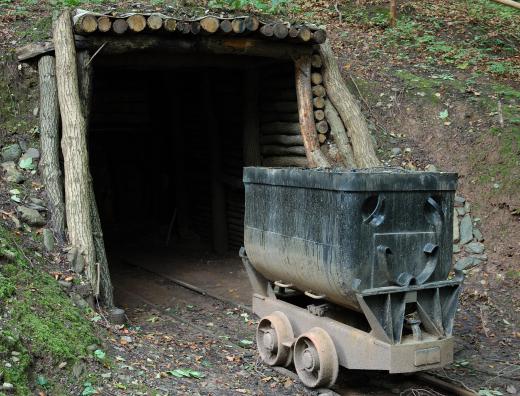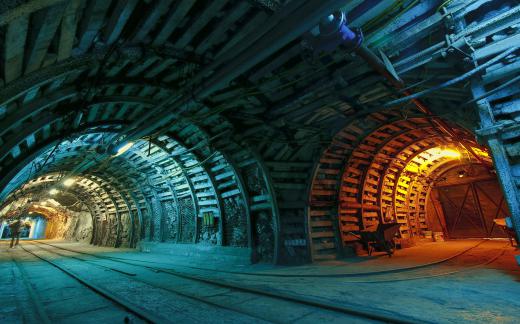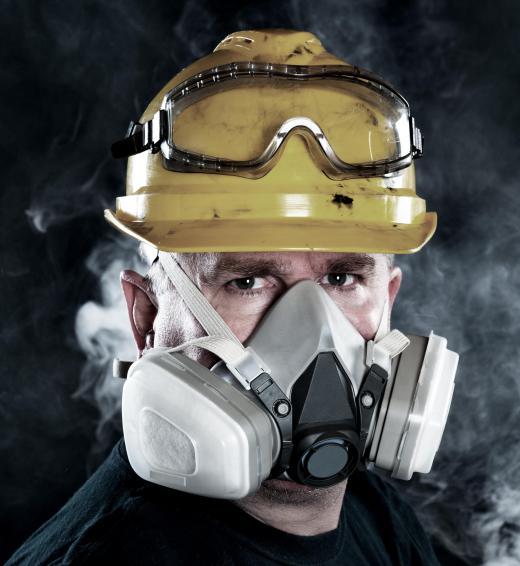Underground mining is a technique used to access ores and valuable minerals in the ground by digging into the ground to extract them. This is in contrast with techniques like open pit mining, in which the surface layers of ground are scooped away to access deposits, or mountaintop removal, in which the top of a mountain is simply shaved off to access the ore inside. When people think of mining, they often visualize underground mining, and many people think of coal mines in particular, although numerous products can be mined underground, with some of the deepest mines in the world being used to access deposits of gold.
Companies opt to use underground mining when deposits of ore are so buried that surface mining is not an option. This requires a lot of logistics to be safe, even with the highly mechanized nature of modern underground mining. Especially with soft ores, much of the work is done by machine, not people, but it's still important to avoid subsidence above the mine, collapses in the mine, explosions, and an assortment of other health and safety risks.

The first step in underground mining is development mining, in which shafts are dug into the site to make the ore accessible. During this phase, along with shafts, things like electricity are installed, along with lifts and shoring to support the walls of the mine so that it will not collapse. Once the mine is developed, active production mining can begin, with the ore being extracted by hand, by machine, or with a mixture of the two.

In shaft mining, a shaft is dug straight down into the Earth to access buried deposits. People get in and out of the mine through lifts in the shaft, and additional shafts may be dug to create emergency exits and deal with ventilation needs. In slope mining, a sloping shaft is dug so that people access the mine by moving down an incline. Motorized equipment is usually used so that people can get into and out of the mine quickly.

One major need with underground mining is ventilation. Ventilation is necessary to remove dust, byproducts of combustion, and byproducts of explosions, along with gases which may be trapped in pockets inside the Earth. Proper support to prevent collapses is also rather important, as are redundant safety systems including alarms for workers, evacuation shafts, emergency lighting, and so forth.
Ever since she began contributing to the site several years ago, Mary has embraced the exciting challenge of being a About Mechanics researcher and writer. Mary has a liberal arts degree from Goddard College and spends her free time reading, cooking, and exploring the great outdoors.

